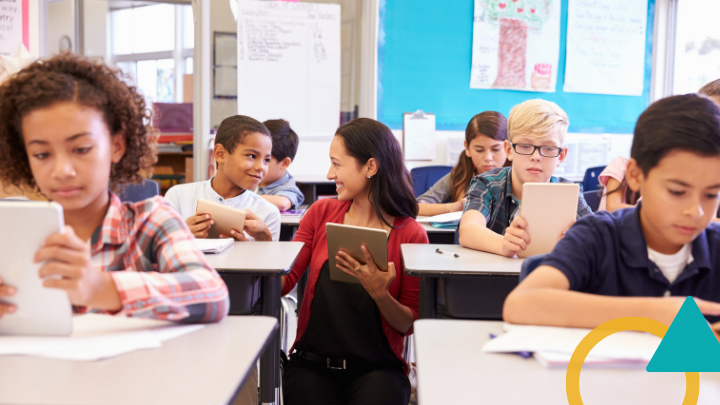Question: How can I re-engage my students? I fear that I am not connecting with some of my students after so much time in distance learning.
As an instructional coach, one concern I have heard frequently from teachers is that they fear they are “losing” students, whether it’s lack of attendance or disengagement with learning tasks. While it may be tempting to try the hot new tech tool or make a TikTok for your classroom, I think what students truly yearn for is a sense of belonging and a classroom that affirms their identities and experiences. With everything going on this year, however, that has been even harder to accomplish.
As educators, it is imperative that we create time and space in our classrooms to honor students’ identities. We often do this in September but may not revisit this later in the year. Yet when we give students space to tell their own stories and discuss their experiences throughout the year, we keep them engaged and deepen their connection to themselves and their community.
Reconnecting through Narrative Writing
Reconnecting with students can, of course, take many forms. Strategies like I Wish My Teacher Knew or If They Only Knew Me are great for quick check-ins and open the door for future conversations in 1:1 check-ins. More in-depth exercises, like narrative writing, can help center students’ voices in any classroom.
One English teacher I coach chose to re-engage students by asking students to write an “I Am From” poem. In this lesson, students read I am From by George Ella Lyon and then write their own poem in the same format as Lyon. This strategy focuses on any narrative writing standard and can be adapted for any grade-level. Many teachers might be familiar with this activity, as something that is typically done at the beginning of the year to get to know students. The teacher who used this strategy in January shared, “Students were so much more willing to share with me in January, after they knew me for six months, than in August.”
Reconnecting through Creativity
The dreaded February blues – particularly difficult this year – can be avoided by giving students time to foster their own creativity.
In addition to simply writing the poem, this teacher asked students to create their own Adobe Spark Video presentations. Each student chose relevant photographs, pasted the text of their poem with the photographs, and recorded themselves reading their poem aloud.
She was impressed by students’ motivation and attributes it to the fact that this exercise affirmed their identity and gave them a chance to share about their own lives. “Students that typically checked out, ‘checked in’ for this assignment because they loved the chance to create a video,” she stated.
Reconnecting through 1:1 Check-Ins
Connecting with students 1:1 can help re-engage them.
Another benefit of this project was that it gave the teacher time to hold 1:1 conferences with students about their writing. Because students were busy working on their videos, she was able to follow up with other students about aspects of their writing by utilizing the breakout room feature of Zoom. She learned more about her students’ lives during the pandemic and hopes to capitalize on this relationship to support future learning. Something as simple as 1:1 check-in with rose-thorn-bud protocol allows teachers to get to know students all year long. Many teachers will also use 1:1 conferences to do some goal setting and reflection with students.
Reconnecting with Families
Re-engaging with families to celebrate students’ successes can be an effective way to re-engage with students.
With the students’ permission, she was able to share students’ Adobe Spark Videos with students’ families. This offered a new window into the family-teacher relationship and a chance for her to share truly good news with families. Read more about ideas for how to do this in the Communicating Positive News to Families strategy.
Although you don’t need anyone else reminding you that we are in “unprecedented times,” it truly is still a very unique year to be a teacher. This might require us to pause our normal curriculum at times in an authentic effort to foster our relationships with our students, to honor their whole identities, and to remember why we love this job.








